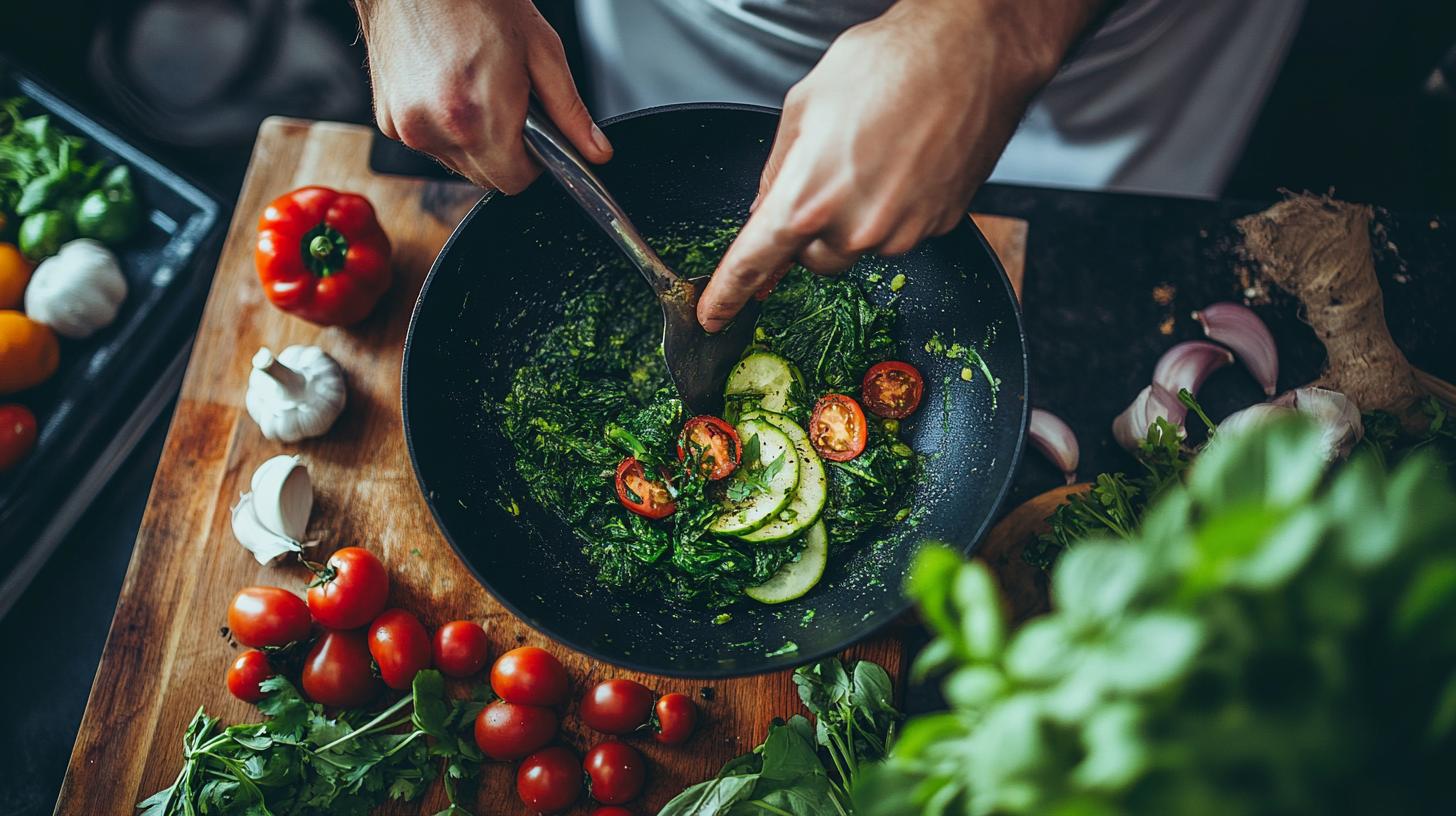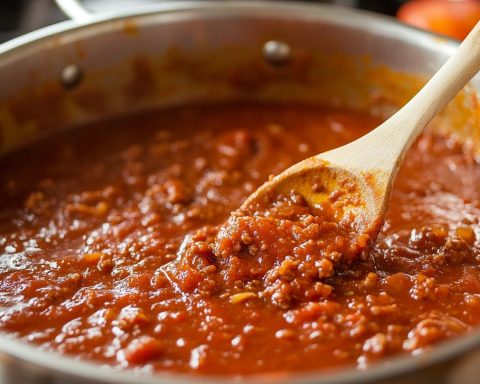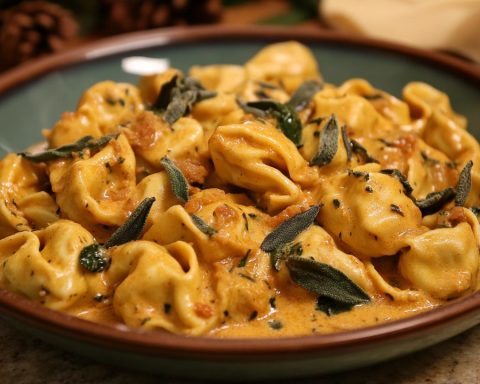Immerse yourself in the rich and aromatic world of Thai cuisine with this delightful vegetarian green curry. Originally hailing from the verdant landscapes of Thailand, this dish is a harmonious blend of vibrant green herbs and spices, offering a tapestry of flavors that dance on your palate. Green curry, or ‘grön curry’, is celebrated for its balance of spice and sweetness, paired with the creamy subtlety of coconut milk. Perfect for vegetarians and those seeking a hearty yet refreshing meal, this curry is not only a feast for your taste buds but a tonic for your senses. Whether savored during a cozy family meal or as an impressive centerpiece for a dinner party, this dish brings people together with its warm, inviting aroma and energizing color.
Ingredients
– 2 tablespoons vegetable oil
– 1 small onion, finely chopped
– 3 cloves garlic, minced
– 1 tablespoon fresh ginger, grated
– 3 tablespoons green curry paste
– 1 can (400 ml) coconut milk
– 1 cup vegetable broth
– 2 cups mixed vegetables (such as bell peppers, snap peas, and zucchini), cut into bite-sized pieces
– 1 cup firm tofu, cubed
– 1 tablespoon soy sauce
– 1 teaspoon sugar
– 1/4 cup fresh basil leaves
– 2 tablespoons fresh lime juice
– Salt and pepper to taste
– 2 cups cooked jasmine rice, for serving
Instructions
1. Prepare the Aromatics:
Heat the vegetable oil in a large pan over medium heat. Add the chopped onion and sauté until softened and translucent, about 3-4 minutes. Stir in the garlic and ginger, cooking until fragrant.
2. Introduce the Curry Paste:
Add the green curry paste to the pan, stirring constantly for about 1 minute to release its flavors.
3. Simmer the Base:
Pour in the coconut milk and vegetable broth, stirring to combine. Bring the mixture to a gentle simmer, allowing the flavors to meld for about 5 minutes.
4. Incorporate Vegetables and Tofu:
Add the mixed vegetables and tofu cubes into the pan. Stir well, ensuring all ingredients are covered with the curry sauce. Continue to simmer for 10-15 minutes, or until the vegetables are tender.
5. Season the Curry:
Stir in the soy sauce, sugar, and fresh basil leaves. Allow the curry to simmer for an additional 2-3 minutes. Add the lime juice, and season with salt and pepper to taste.
6. Serve:
Spoon the green curry over bowls of cooked jasmine rice. Garnish with additional basil leaves for a burst of color and flavor.
Cooking Tips
– To enhance the sweetness naturally, consider adding a few slices of ripe pineapple during the simmering process.
– For extra spice, include a finely chopped green chili when cooking your aromatics.
– Ensure your tofu is pressed and drained to maintain a firm texture that nicely absorbs the curry sauce.
Serving Suggestions
Pair this vibrant green curry with a refreshing Thai iced tea or a light cucumber salad to balance out the flavors. A warm, crusty baguette can also be served on the side to soak up the rich and aromatic sauce, offering a textural contrast that complements each bite.
Enjoy this journey of flavors and let it transport you to the sun-dappled streets of Southeast Asia, wrapped in the comforting embrace of tradition and taste.
Unlocking the Lesser-known Secrets of Thai Green Curry
Thai green curry is adored worldwide, but did you know about its deep cultural roots and the controversies surrounding its evolution? Often overshadowed by its culinary appeal, the history of green curry is just as rich as its flavor.
Did Green Really Mean Green?
Despite popular belief that the “green” in green curry refers simply to the use of green chilies, historians suggest it once denoted the association with the central Thai region known for lush landscapes. Over time, as culinary globalization occurred, green curry started adapting to local ingredients beyond Thailand.
Why Tofu and Not Beef?
Traditionally, green curry was made with beef and other meats. However, as dietary choices evolved and vegetarianism gained popularity, recipes shifted to include tofu. This change is not without its debates; purists often argue for traditional ingredients, while modernists appreciate the inclusiveness of diverse diets. Discover more about Thai culinary transformations at Eater.
Curry Paste: A Tale of Time
Preparing the authentic curry paste from scratch is labor-intensive. Historically, families would gather to create batches large enough to last weeks, serving as a bonding ritual. While pre-made pastes dominate today’s market for convenience, the artistry of homemade paste retains its allure among enthusiasts.
Controversies in Authenticity
The demand for “authentic” Thai green curry is steeped in controversy, as “authentic” can vary. The dish’s identity has morphed through migration and diaspora, each iteration justifiably claiming authenticity. Explore more about cultural food authenticity at Nomad Spirit.
Delve further into the conversation about what truly defines a dish’s authenticity and how food evolves, questioning whether culinary creativity diminishes or enhances a dish’s soul.








